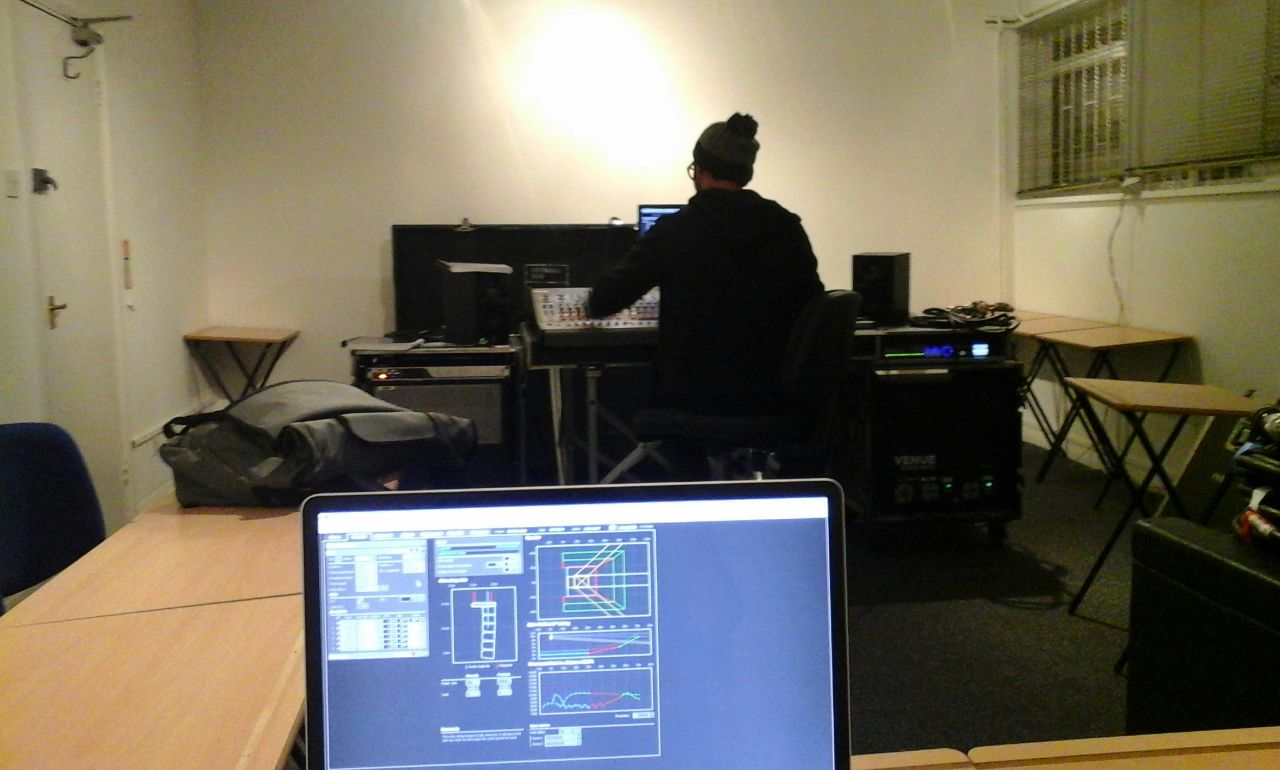I have noticed that a lot of things have changed in the industry in the last twenty years.
First of all: There are other women! What a relief to have other women to talk to about sound. I mean I love my male co-workers and many of them are good friends. Nevertheless, I remember how it was. How I would spend days with guys at work and when I was finally off I was dying to hang out with my girlfriends. To be able to wear perfume and a dress and not have to be one of the guys. Today, I feel I can stand by my feminism and still feel comfortable while at work. (A great Danish female guitar player explained feminism this way: “feminism is to be free to do what I want as a woman”). It is really refreshing to know that there are other female sound engineers out there.
Second: The presence of digital consoles. When I started out twenty years ago, it was all analog consoles. Now it’s more or less all digital. I was afraid when I started my come back a little over a year ago, that I would fail big time on the digital consoles. I am happy to report that after being introduced to a couple of different consoles during this course that I now feel comfortable with digital. I feel I couldn’t live without them now. They make the life of a sound engineer so much easier and there are no more 800 pound consoles + heavy outboard racks, taking up a lot of space.
Monday morning we started on system design. That’s a tough lecture on a Monday morning. I mean this is like the body of the whole system. If the design is not right, you may easily mix yourself into a hole. Therefore, what today’s instructor, Luca, was trying to teach us on system design was worth gold. However, it’s tricky to learn when you do not have a solid foundation in math or physics. I know to succeed in live sound I have to try and learn a thing or two about designing sound systems, so in addition I have actually decided to take some math classes next year. I really do feel it is important to a sound engineer to be able to design a system.
In addition, Luca taught us four points to consider when you start to prep for a show:
1. The audience: How many will attend? Where will they be? Are they standing/sitting?
2. What kind of Production: Arena/touring – what are the needs? What tyoe of venue?
3. Production issues: What’s the budget? How much time for load in/set up/soundcheck?
4. System design: Choose speakers, cross overs, and power to meet the needs of the production. In addition, measure the venue; make a drawing of how/where to set up the PA These four points are skills you need to know. The next day we touched on the importance of rigging and understanding that if you are not paying attention, your mistakes could cost someone their life.
Day Three:
Barry, the course director, had us all sitting on sofas in front of our little provisional stage, where we listened to different types of microphones on different instruments. It’s a great exercise and something that’s possible to try at home, if you have if you have access to mics, instruments, and some type of monitoring.
The end of the week we were introduced to the Avid Profile and the Digico SD8. I found the SD8 especially interesting as I’ll be mixing monitors on that one next week
